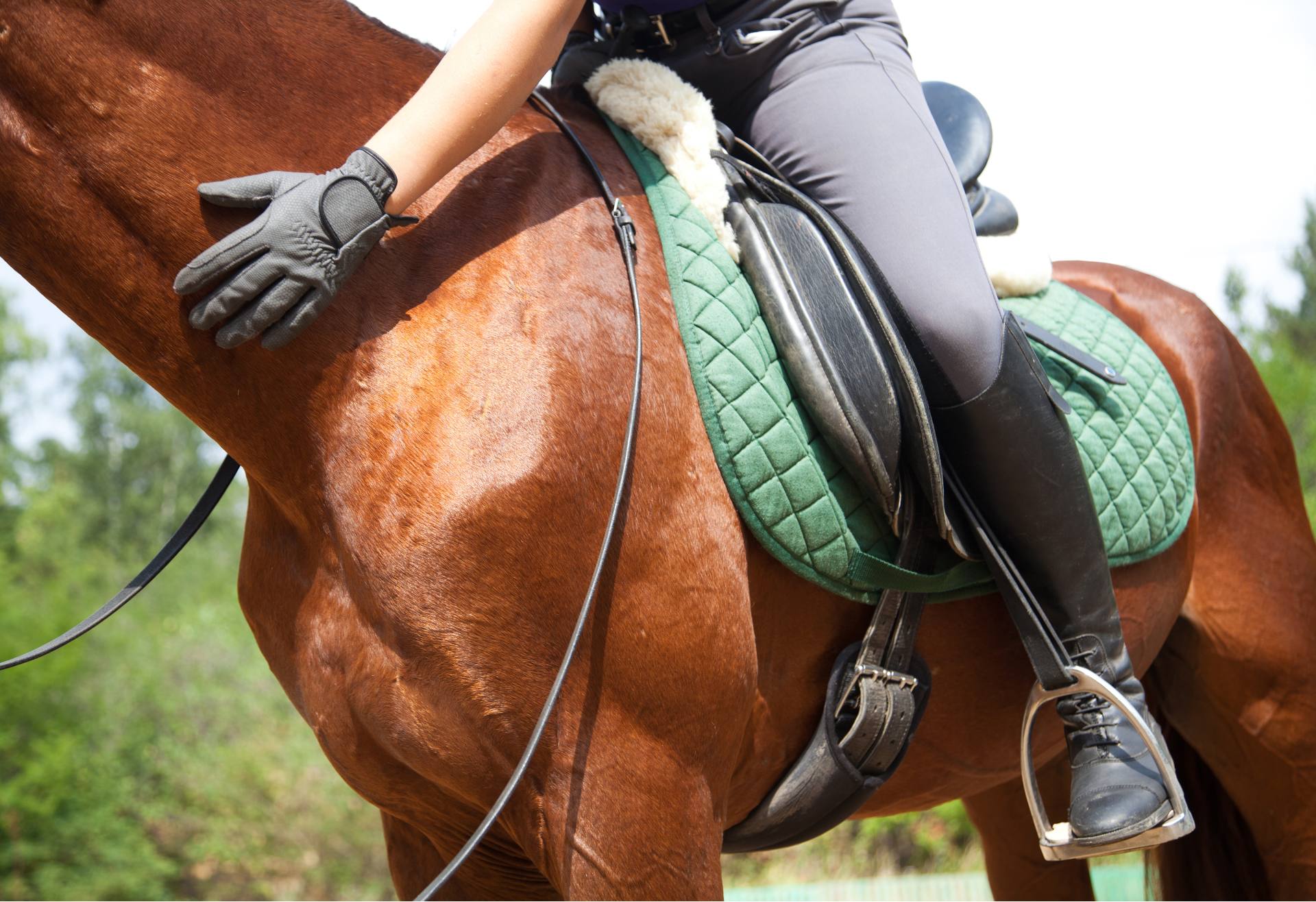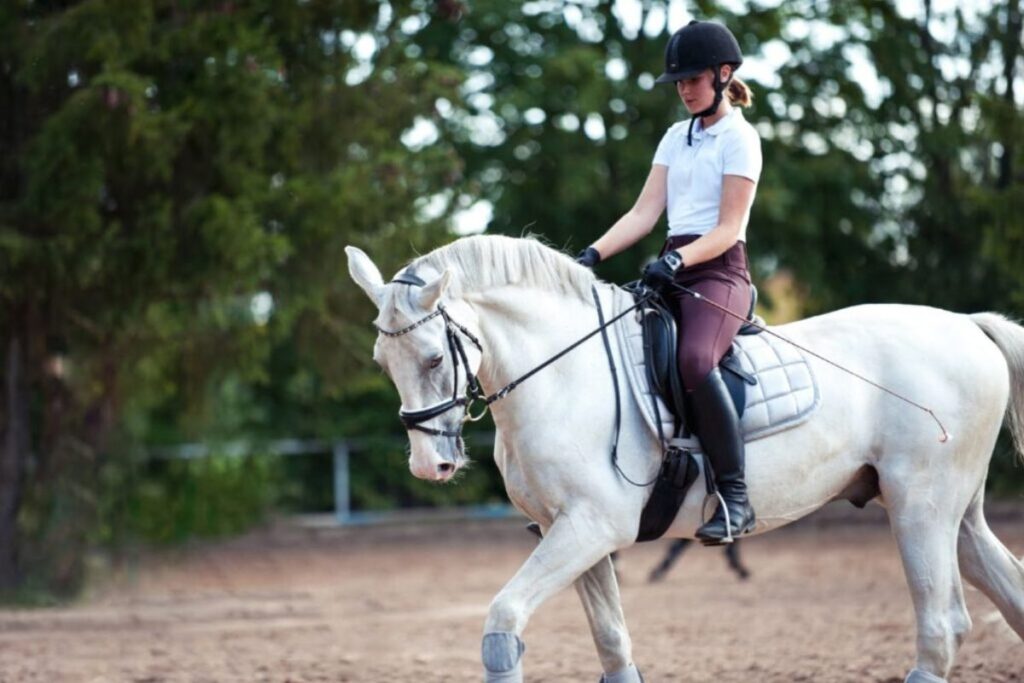Menu

There has been a growing concern in the equine industry, that because we humans seem to get heavier, horses are, naturally enough, working with a heavier load on their back. A recent study tries to investigate the effects of rider´s size on the horse. The results show that horses react very differently to changes in their back dimensions, muscle tension and muscle pain after being ridden by riders of different sizes.
Yoy may also like to read: Right or left? Find out which leg your horse primarily uses
All in all, there does not exist much research on the matter of rider´s size and the effect hereby on the horse. It is known that ridden exercise can temporarily change the width of the horse’s back. One study reported an increase in thoracic dimensions in horses that were exercised with good posture. This compared to those that showed poor quality of work, had well-fitted saddles and in general were sound compared to horses that were lame.
In the same study, a small number of horses also developed back muscle pain after being ridden. Which was associated both with a decrease in back width and ill-fitting saddles. In other words, the saddle does matter a great deal!
The research team designed a study to investigate the effect of riders of different sizes on pre-exercise and post-exercise thoracic width changes and epaxial muscle tension and pain.
A group of six horses were ridden by four riders of different sizes with similar ability for five days. Horses and riders were selected in terms of:
The riders were all able to ride in balance and although none were familiar with the test horses, they were all accustomed to riding a variety of horses. The ridden test for each day was about 30 minutes long.
Each horse had their back shape measured and documented before and immediately after each ridden exercise test at the 8th, 13th and 18th thoracic vertebrae. For each level, the thoracic widths were measured at 5cm and 15cm below the top of the horse’s back.
Furthermore, the long muscles on the top of the horse’s back were systematically felt on both sides from the withers to the croup. This was to find any increased muscle tension or pain. A tension was defined as muscle stiffness.
Pain was characterized by:
Overall, there was an increase in thoracic width measurements after exercising with the two lighter riders and a decrease with the two larger riders. Furthermore, the tests for the larger riders were terminated part way through because of the development of transient lameness.
This means that the horse, in general had more freedom in its back when training with a lighter rider than a heavy one.
Overall there was a decrease in the measured widths post-exercise as the rider weight increased. The greatest difference in thoracic width changes occurred at T8 and T13, under the front and the middle of the saddle.
The average change in thoracic width for each rider was as follows:
- Rider L increased across all sites
- Rider M increased across 5/6 sites (decreased at T8 15cm)
- Riders H & VH decreased across all sites

In this study, saddle fit was considered to be adequate, but not optimal, for each horse and every saddle was too small for the heavy and very heavy rider. Generally, among equestrians, there is a high number of ill-fitting saddles for both horse and rider. However, an increase in back muscle tension or the development of pain following ridden exercise can be the result of an ill-fitting saddle. Therefore, saddle fit must be taken into account also in this study.
Larger rider size may have had a negative effect of ill-fitting tack. Riding in a saddle that was too small influenced individual rider position and technique, which was likely to have contributed to increased peak forces.
This research is not enough to “proof” that rider size individually matters to the horses. A number of other factors may also have influenced the results of this study for example the saddle fit.
The effects of the different riders on back muscle and dimensions should therefore be considered as the combined effects of rider size to horse size, rider technique and saddle fit.
Main point: Larger riders and saddles which did not fit the larger riders negatively, influenced the back dimensions and increased the development of muscle tension or pain.
The key take home message is that when larger riders ride, they should select a horse of appropriate size with a saddle that is optimally fitted to both horse and rider.
Source: Eurodressage